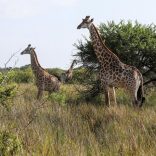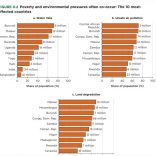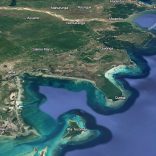Mozambique: ANAC recruiting 351 new rangers for eight national parks
Mozambique: Zinave National Park receives 10 black rhinos

Screen grab: RTP Africa
Mozambique’s Zinave National Park (PNZ), in the southern province of Inhambane, which is part of the Greater Limpopo Transfrontier Park, on Monday received 10 new black rhinos, five males and five females.
Rhinos were recently reintroduced into the PNZ, and the first calf was born in the local sanctuary in 2021.
The animals come from the South African province of KwaZulu-Natal, as a result of a donation from the South African organisation, Ezemvelo KZN Wildlife.
According to one of the park’s managers, Pejul Calenga, the arrival of the rhinos represents another stage in building a solid tourism product in Mozambican conservation areas, especially at a moment when this species is considered critically endangered.
“It has now found a new habitat, and its reintroduction reinforces the ecological recovery programme under way since 2016. The rhinos are part of the Zinave Park ecosystem restoration project through the reintroduction of viable wildlife populations, numbering 2,540 introduced animals from 16 different species”, he said.
The initiative is coordinated by the National Administration of Conservation Areas (ANAC), in partnership with the Peace Parks Foundation, with financial support from the UK People’s Postcode Lottery taxpayers.
For his part, a second Zinave manager, António Abacar, revealed that the PNZ collected 25,000 dollars in revenue during 2024, the best result since the beginning of its ecological recovery in 2016. However, there is a need to mobilize more resources for investment in the park.
“It had revenue of around 1.4 million meticais, the best since 2016. The increase in revenue is the result of around 1,200 visits throughout the year, reflecting the success of the reintroduction of fauna and the improvement of the habitat after years of degradation caused by climatic factors and armed conflicts”, he said.
Currently, PNZ is the only Mozambican park that is home to all the “Big Five – elephant, rhinoceros, lion, buffalo and leopard”, which gives it a strong attraction. The park also contains species such as crocodiles, giraffes, wild pigs, hippos, impalas, kudos, buffalos and zebras.
Covering 408,000 hectares, the park is home to more than 200 tree species and just as many species of grasses, making it a national biodiversity sanctuary.
Mozambique currently has 12 national parks and protected areas, home to around 5,500 species of flora and 4,271 of terrestrial fauna.












Leave a Reply
Be the First to Comment!
You must be logged in to post a comment.
You must be logged in to post a comment.